How DRC-HUBO from South Korea Wins DARPA Robotics Challenge
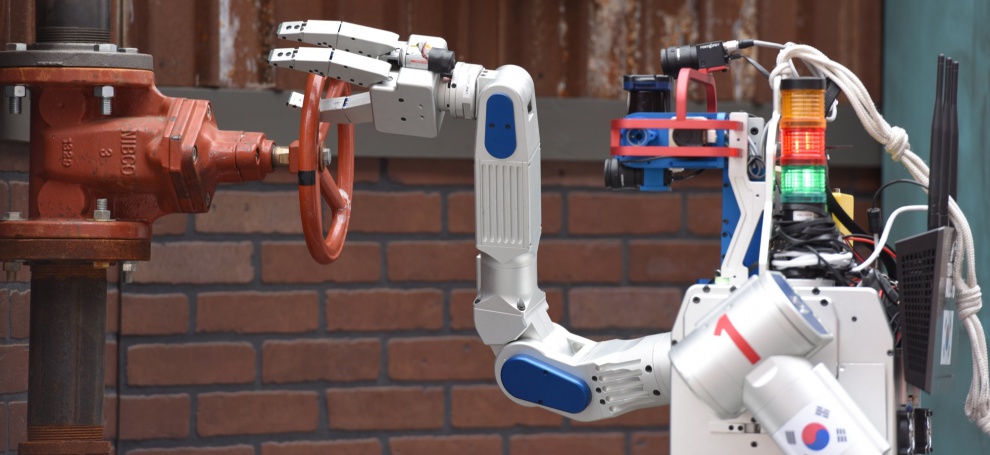
On Saturday, the Korean Leading Science and Technology Institute (KAIST) team from South Korea won the DARPA Robotics Challenge (DRC) in Pomona, California, when their robot, the adaptable humanoid DRC-HUBO , defeated 22 other robots from five different countries and won the main cash prize of $ 2 million.
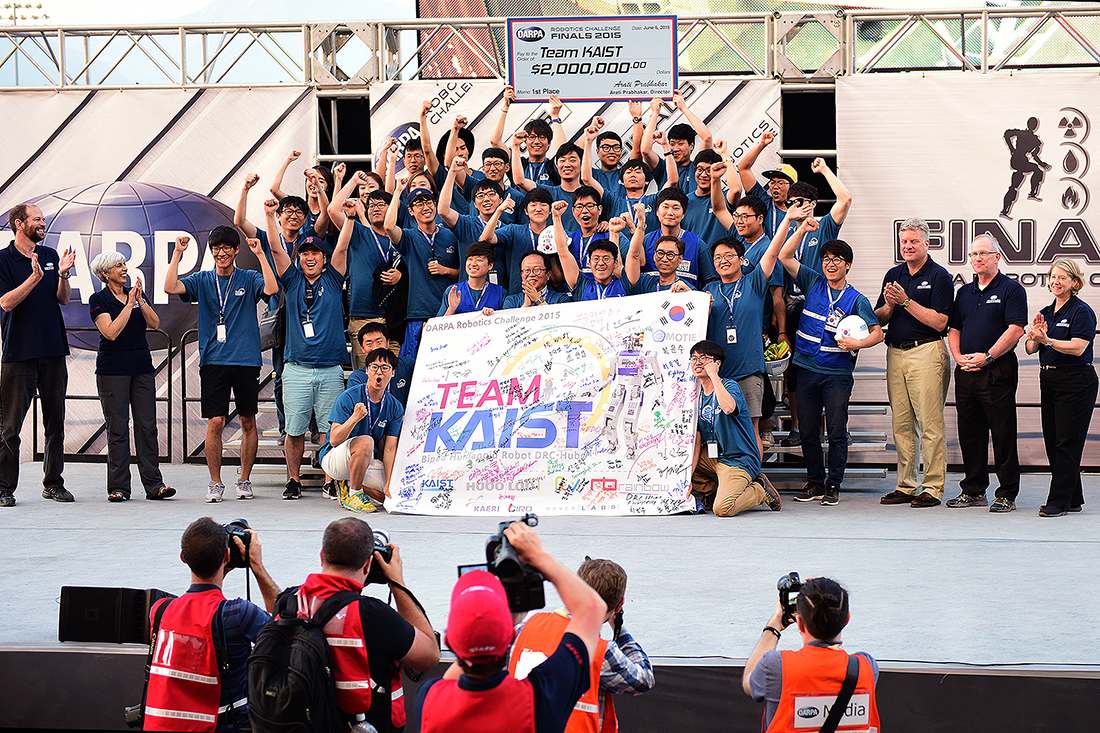
The ability to transform from a two-legged walking robot into a car on wheels played an important role in receiving the award. Many robots lost their balance and fell to the ground, opening the door or working with a drill. But not DRC-HUBO . The unique design allowed him to complete tasks faster and, more importantly, stay on his feet (and wheels).
Two-legged movement [for robots] is still not stable, ”said Rong Ho O, professor of mechanical engineering at Korea’s leading scientific and technical institute, team leader at KAIST. - If one of them works incorrectly, the result can be catastrophic.
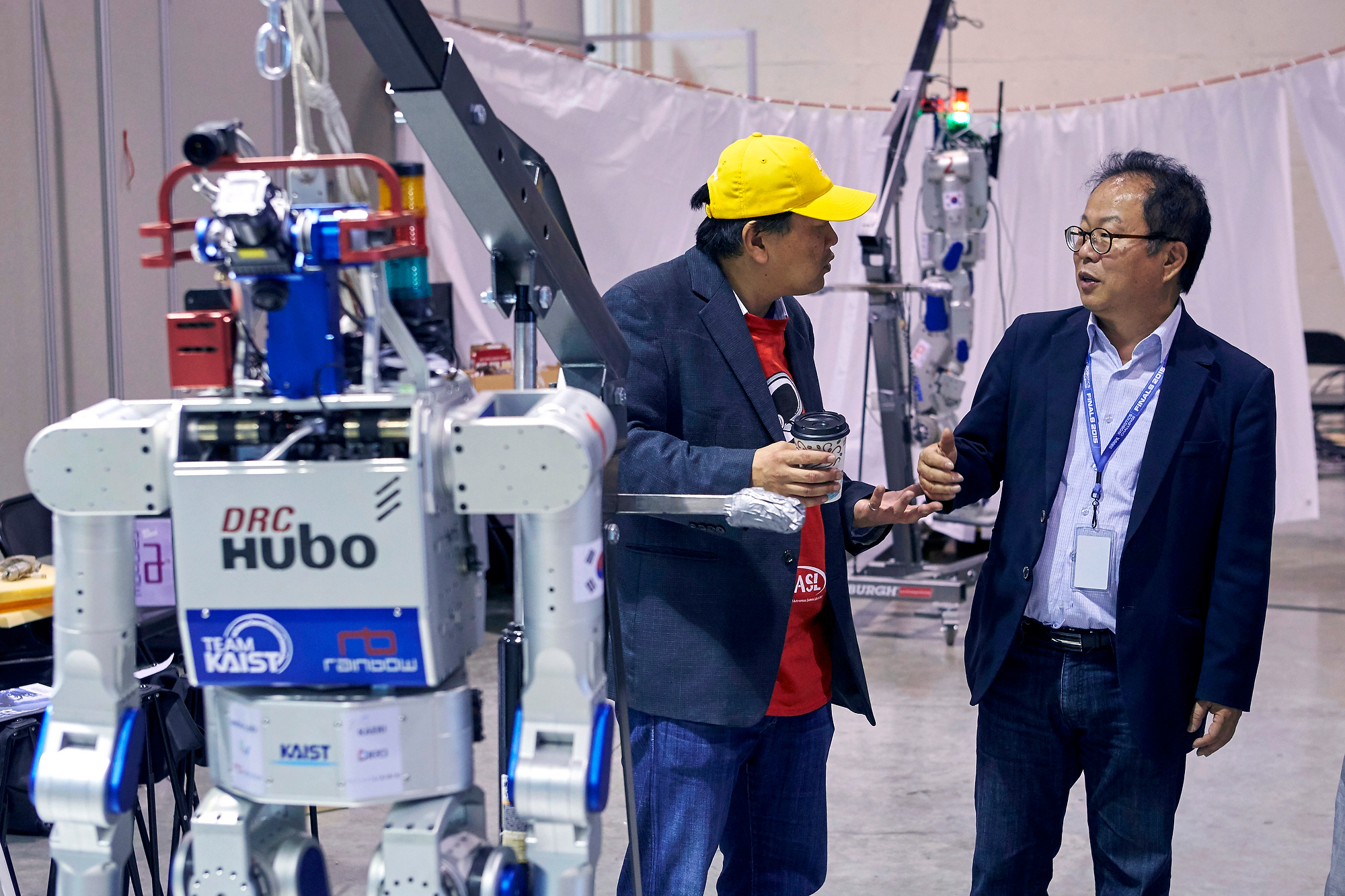
He said that the humanoid robot has advantages when working in a society of people, but he wanted to develop a design that would minimize the risk of falls: “I thought about many things, and the simplest thing was the wheels on my knees.”
DRC-HUBO can change posture, standing on two legs, walk, reach for objects that are high, and also move in a more stable position, on your knees.
DARPA decided to organize DRC after the Fukushima incident in Japan, hoping to advance in the field of robotics. To the DRC Finals competitionteams developing semi-autonomous robots were invited, and human operators had to work together to model the conditions of the disaster. Robots created by universities and companies for the competition were very different in size and shape, among them there are robots with legs, wheels, as well as hybrids.
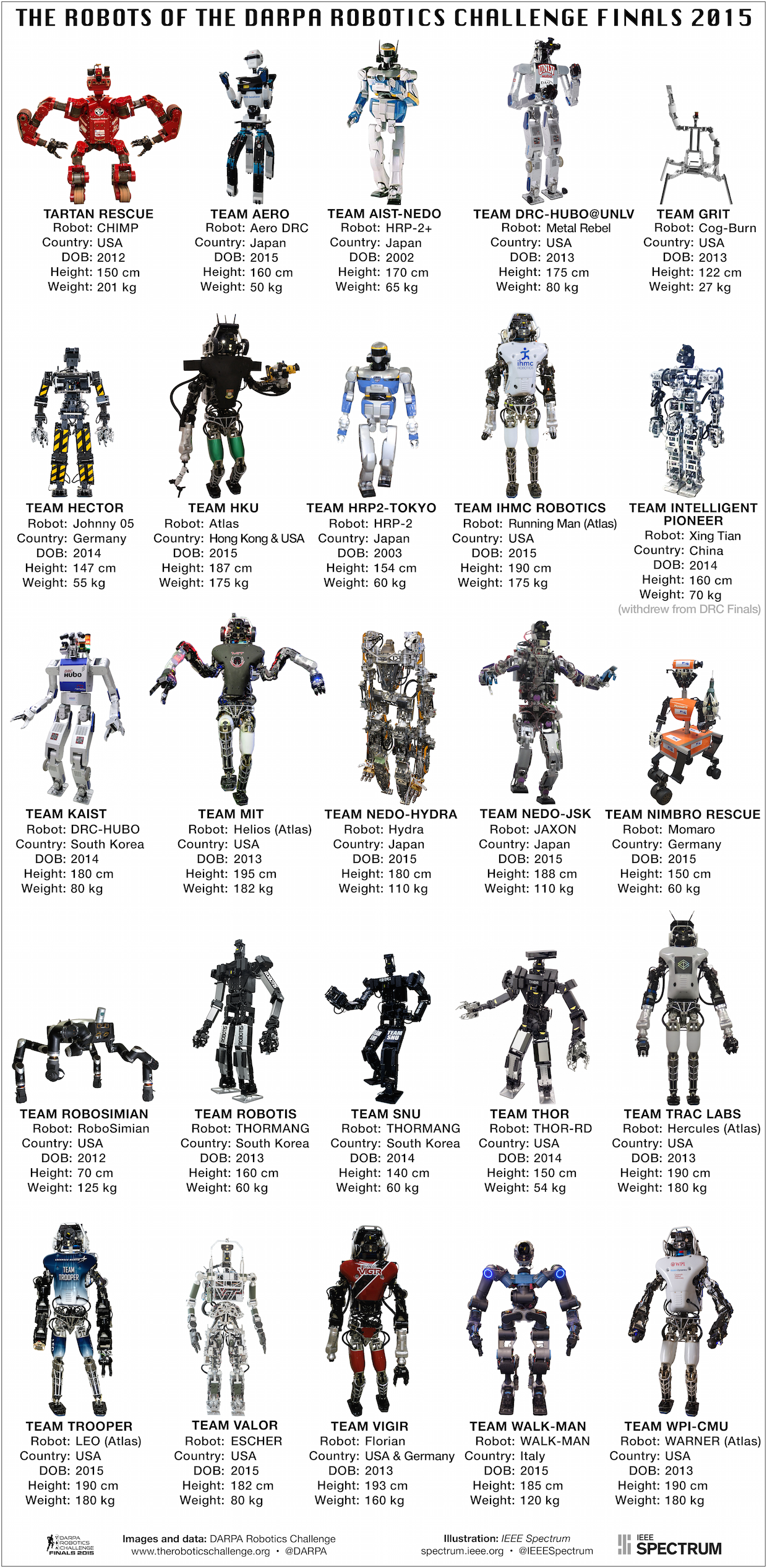
DRC-HUBO became a winner because it was able to complete all eight tasks without errors in the shortest time (44 min. 28 s). Other teams also performed well, but their robots lost time due to delays. Among the best are the Tartan Rescue team , its CHIMP is a robot with legs and caterpillar tracks, which was able to return to tasks after the fall; Momarofrom the team of Bonn University - a simple and elegant car on wheels, with a rotating head and two hands; RoboSimian from NASA's Jet Propulsion Laboratory, with four legs and yoga-like movements; ATLAS from the IHMC team is a large electric humanoid robot developed by Boston Dynamics .

DRC-HUBO completes the valve closure task. Notice that his upper body is rotated 180 degrees.
Flexibility is the most important thing, ”said DARPA manager and DRC organizer Jill Pratt at a meeting with reporters commenting on the design of the robots. “A robot that can change configuration from using legs to using wheels can have a more complex structure and more weight, but it will give you that flexibility.”
Professor O is an internationally recognized expert on humanoid robots. He and his KAIST students in Daejeon, South Korea, have been improving their HUBO platform for generations. Below is a video that is already several years old: then Professor O demonstrated HUBO 2:
For DRC Finals, he decided to significantly modify the robot to prepare him for possible tasks. At the master class after the competition, Professor O said that the DRC-HUBO “is no different, it's just a humanoid robot.” But in fact, his team from KAIST carefully worked out every detail. He estimated the cost of each robot at approximately $ 500,000 and $ 1 million. Below are the main features that helped DRC-HUBO cope with the tasks:
1. Wheels on his knees: DRC-HUBOhas wheels on both knees and rollers on the legs. Wheels allow the robot to move quickly and steadily. Moving on the ground, he uses optical sensors on his shins to measure distance using optical flow.
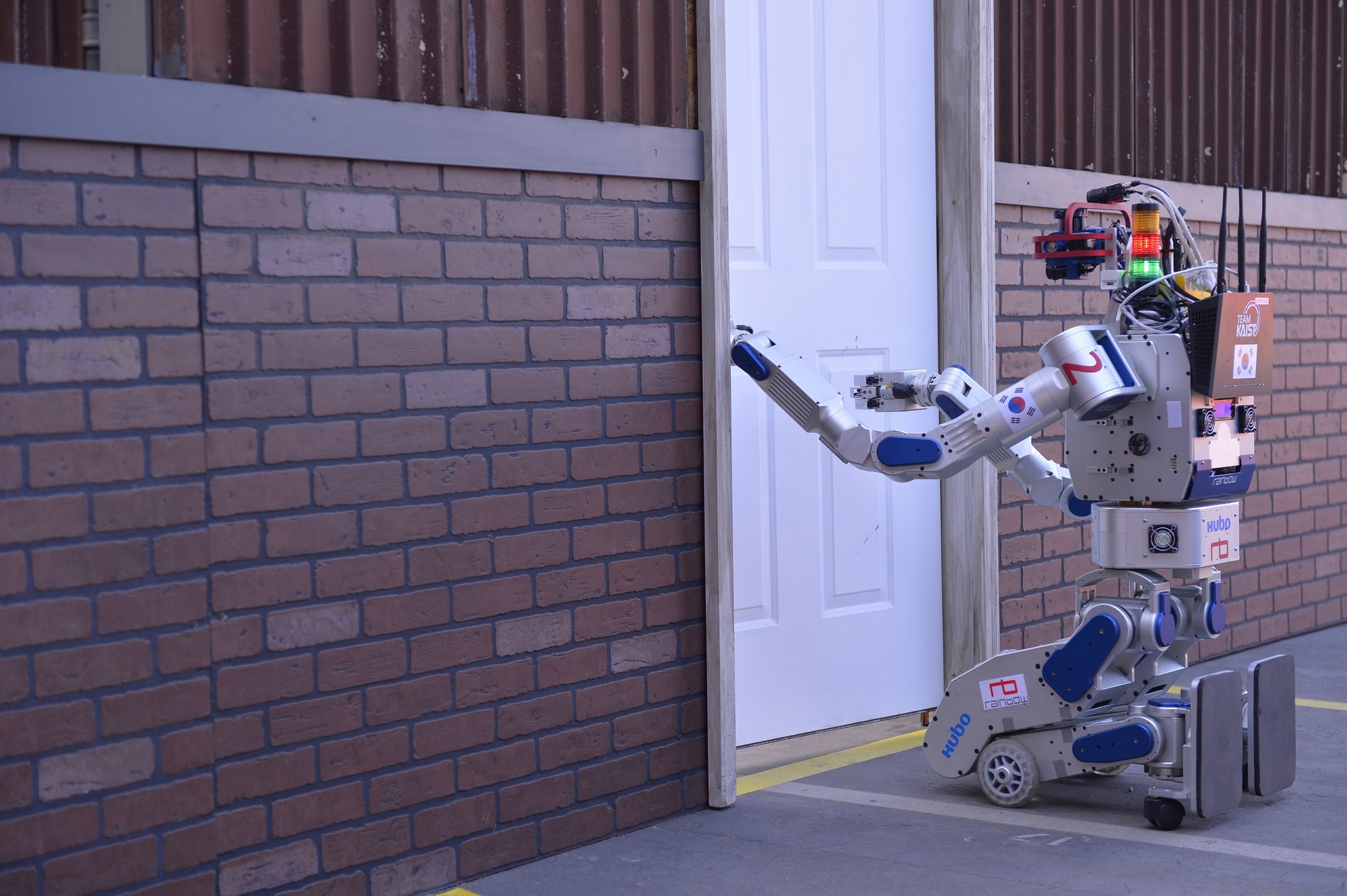
2. Powerful engines: just like SCHAFT - the robot that won the DARPA preliminary competition and acquired by Google , DRC-HUBO has very powerful engines (it has 33 of them, with 31 degrees of free movement). Thanks to specialized engines and an air cooling system (fans and blades), the robot can use voltage 3-4 times more than specified in the engine specification, with a maximum value of 30 amperes in some cases.
3. Compatibility: the team wanted to make the robot compatible without the use of torque sensors and the usual automatic controller (they were afraid that this would lead to instability). Therefore, using a special amplifier, the compatibility problem was transferred to the engine driver.
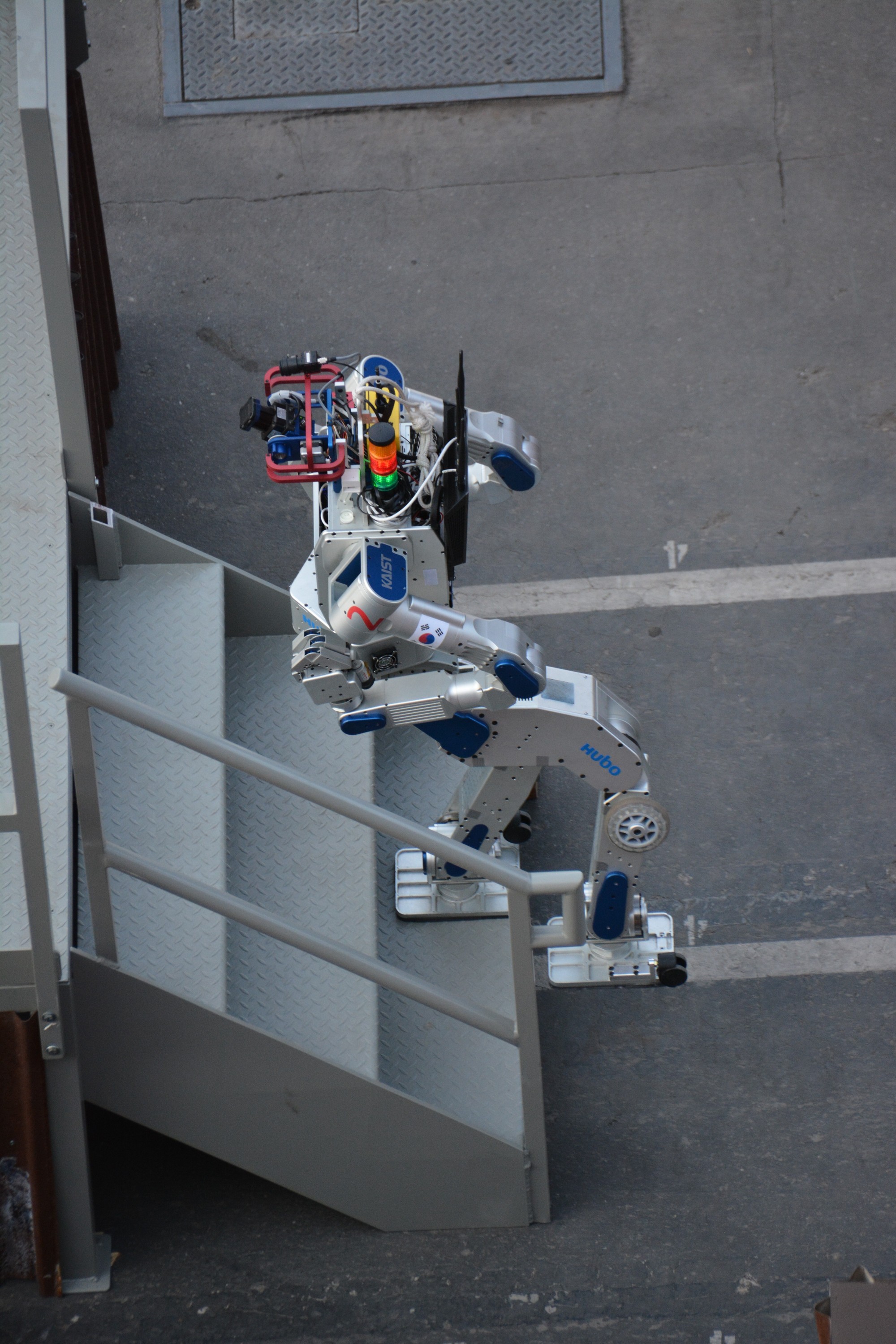
4. Rotating torso: DRC-HUBO can rotate its upper body 180 degrees. This means that the robot’s knees can be turned in one direction, while he can watch in the opposite direction (try it yourself!). This ability works not only when it is standing, but also when it is on your knees. The robot took advantage of this opportunity in several tasks when it was necessary to: drive a vehicle, perforate a wall, move through the rubble and climb stairs.
5. Long arms: KAIST team members realized that the HUBO 2 arms were too short for some tasks, so they made longer arms , turning 7 degrees. They also hid all cables inward so that they would not cling to surrounding objects. Each hand can hold weight up to 15 kg, and also has an “adaptable gripper” that can grab hard and soft objects.
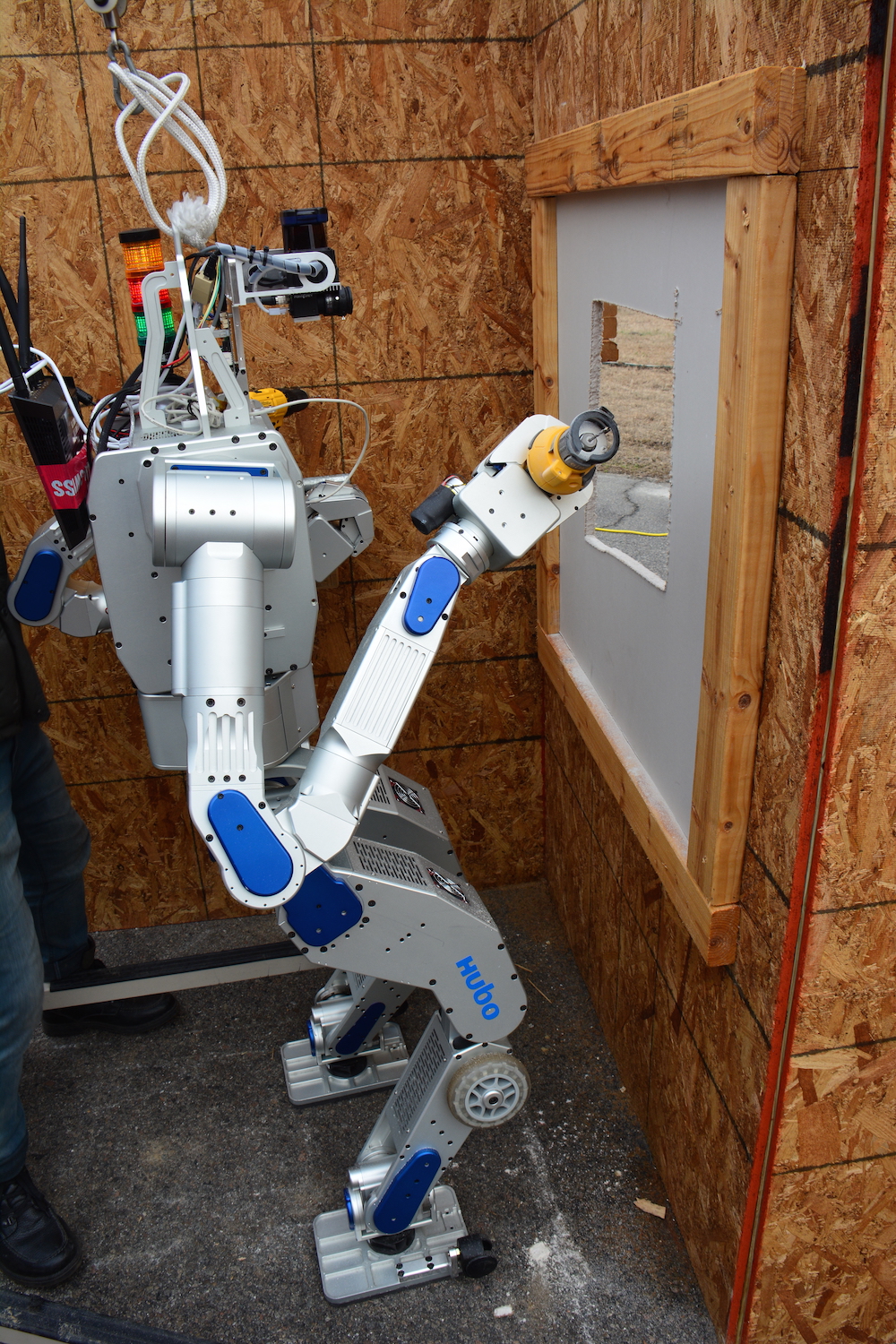
6. Simplified sounding: Instead of filling the head with sensors, stereoscopic cameras and lidars that constantly scan the environment (this technology is used by the ATLAS robot , for example), DRC-HUBOhas a simplified vision system; operators rely on a conventional camera most of the time, and a lidar attached to a servo drive scans the environment only when necessary. In fact, the robot does not have a head - “only eyes”, noted one of the KAIST students .
7. Power: when engines require high power, the main power system may not be able to provide enough energy to the important components of the machine. To avoid this, the team used a supercapacitor, which supplies energy to computers, transmission channels and some sensors and gyroscopes, even if the main power system fails.
8. Special software: the team uses Xenomai real-time OS for Linux and a special motion control framework called PODO (developed by KAIST ). They also leverage the Gazebo simulation environment. The team developed its software with a focus on low bandwidth and unstable communication between operators and the robot.
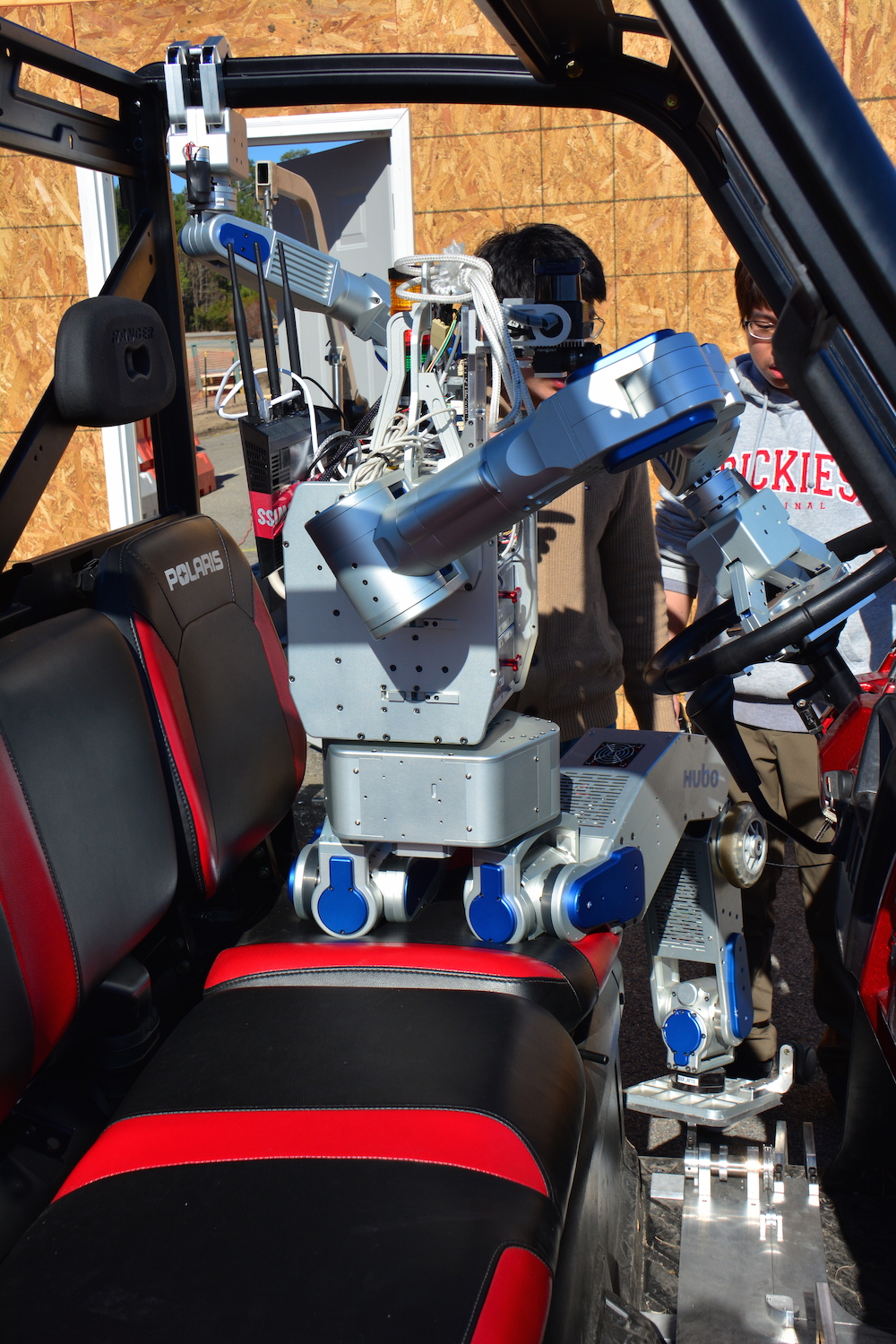
And now let's take a closer look at DRC-HUBO and how he went through all eight tasks, which brought victory to the KAIST team (if you want to see everything in full, you can do it by reference; an accelerated version is here):
1. The task of driving.
The teams were allowed to make modifications to the Polaris vehicle so that their robots could easily drive in and out of the vehicle . The KAIST team installed a metal device with two levers at the bottom of the car; when the DRC-HUBO pressed one of the levers, the cable system worked so that the second lever pressed the accelerator. With his left hand, the robot held onto the car, and with his right hand he controlled the wheel. He completed this task very quickly (the process took a little more than a minute) and, unlike other teams, did not stop passing obstacles.
2. The task of exiting the vehicle.
This was one of the most difficult tasks. Preparing for him, Professor Oh, as he told us, he got out of the car several times to understand what movements and body parts he uses for this. He concluded that a “dynamic approach” would be required. His team programmed the DRC-HUBO so that he raised his hands and held onto the frame of the machine. The robot uses 100 Newtons of traction for each hand. When the arms lift the body of the robot, by and large it drops out of the car, although the movement is controlled (thanks to the “dynamic approach”). Pay attention to his wonderful maneuver to get out of the car at around 1:00!
Professor O reported that during the development of this movement several engines burned out, but the problem was solved using the most powerful, specially made engines. At the moment, the robot can get out of the car in less than 4 minutes, and when it is already on the ground, it sits on its knees and leaves.
3. The mission with the door.
Unlike other robots that had to stand (and balance on two legs) to complete this task, the DRC-HUBO could kneel by turning the door handle. He deftly uses his other hand to keep the door open while he rotates the doorknob. In less than 2 minutes, he drove through a doorway.
4. The task with a valve.
Notice that at the beginning of the video, the lidar moves up and down to allow operators to scan the terrain in front of the robot. Then, when the DRC-HUBO approaches the gate valve , it rotates the upper body 180 degrees. Pay attention to his movements at 0:20, because you may not notice (the shooting angle does not show the lower part of the robot's body, unfortunately). In this position, still on his knees, the robot can raise the body so that it is easier to control the valve (why stand if it is not necessary?). The robot scans the area using a lidar, determines the position and after 3 minutes performs the task. Please note that only one turn was required, but DRC-HUBOmade two complete turns! At 2:01, you can see the robot “return” the torso to its normal position.
5. The task with the wall.
This was a difficult task for most teams, because the robot had to hold the drill and press the on / off button to use the device. DRC-HUBO applied force sensors on each arm to better capture the instrument. You can see how the robot moves by itself and even moves the drill on a shelf (knocking down another drill on the way) in order to better capture it. When the robot manages to grab the tool, the operators show the place for perforation, and the robot does the rest. He uses 20 Newtons of power traction, and you can see how he uses his body to move the drill perfectly in a circle. Completing the task takes the robot 11 minutes.
6. The job is a surprise.
The task was to pull out the plug and insert it into another outlet. Notice how DRC-HUBO scans the floor and notices that the drill he dropped earlier is in its path. The robot rotates and pushes the instrument with its knees. Then he tries to turn around and seems like he is crashing into a wall. The operators, obviously, notice the problem, he goes a little ahead and then he can turn around. In the end, the robot approaches the wall with a socket that is installed higher than the gate valve and door handle. It's time to get to your feet, and you can watch it from around 3:05. DRC-HUBOtakes several steps forward and after a while begins to complete the task. He grabs the plug by the cable; we believe that it was intended so that operators could better see the plug and the robot arm did not obscure it, which would make the task impossible. In time, you can see this at around 7:47, as the robot tries to insert the plug and misses the socket. After several corrective movements, the task is completed! 13 minutes and 30 seconds passed - more than to complete all the other tasks.
7. The task of moving through the rubble.
The DRC-HUBO can move its knees forward or rotate the torso 180 degrees and move its legs forward, acting like a bulldozer bucket. And here is what he does to complete the task. You can see how he rotates the body at 0:28. That looks cool. The robot raises its hands up - probably so that they do not get entangled in the trash. Then it begins to move through the rubble. He stops only for a second, when it seems as if a piece of wood is stuck in a cinder block, so he turns slightly to the left to remove it from the path. Moves the plastic pipe to the right. At 4:14, he turns his torso again and stands in front of the steps. The task takes less than 5 minutes.
8. The task with the steps.
Professor O said that for many tasks, especially for climbing stairs, it is important that the robot can see its legs. Large robots like ATLAS can hardly do this, they need to bend the body, which makes balancing more difficult. DRC-HUBOsolves this problem in a very smart way. He climbs the stairs backwards! Thus, his knees do not block the cameras and you can see the legs and the ground. But how can he see legs if he rises backwards? Turning the torso, of course! You can see the whole process, starting at 0:26. The robot kneels in front of the stairs, and then suddenly turns its back to it. Then he gets up, and at 0:55 you will see how he turns the torso 180 degrees. Now he can scan the steps and begin to climb. But note that before that he takes two steps to the side, to the left (1:45)! After a couple of minutes - which seemed like an eternity to the audience - the robot finally begins to rise, breaking the last three steps one after another. Clearly! In less than 7 minutes DRC-HUBOstands on the platform. There is no sound on the video, but at that moment the team and the audience exploded with applause.
KAIST made four copies of the DRC-HUBO and practiced without safety ropes for more than a month before the competition. They trained on the street, in a parking lot with an uneven surface and in various weather conditions, including strong sunshine and wind. “If we don’t remove the safety cables, the operators will be afraid,” Professor O said at the workshop after the competition.
He added that during training, they performed all the tasks in both modes - standing and on their knees (the average time was 30 minutes). The team was good at clearing the rubble with the hands of DRC-HUBO , which they were not able to demonstrate at the DRC Finals , and they could also perform tasks on a more difficult surface than the one at the competition.
It is a pity that we could not show all the robot's abilities in the competition ... everything was too simple! - said Professor Oh , going down from the stage to applause.
